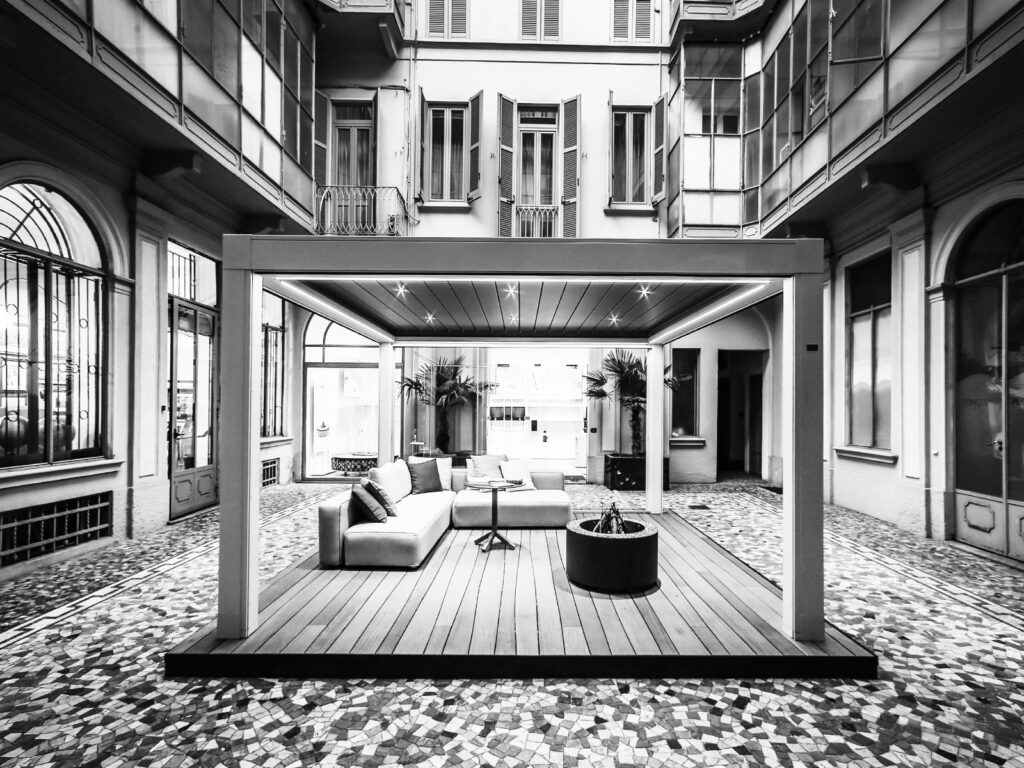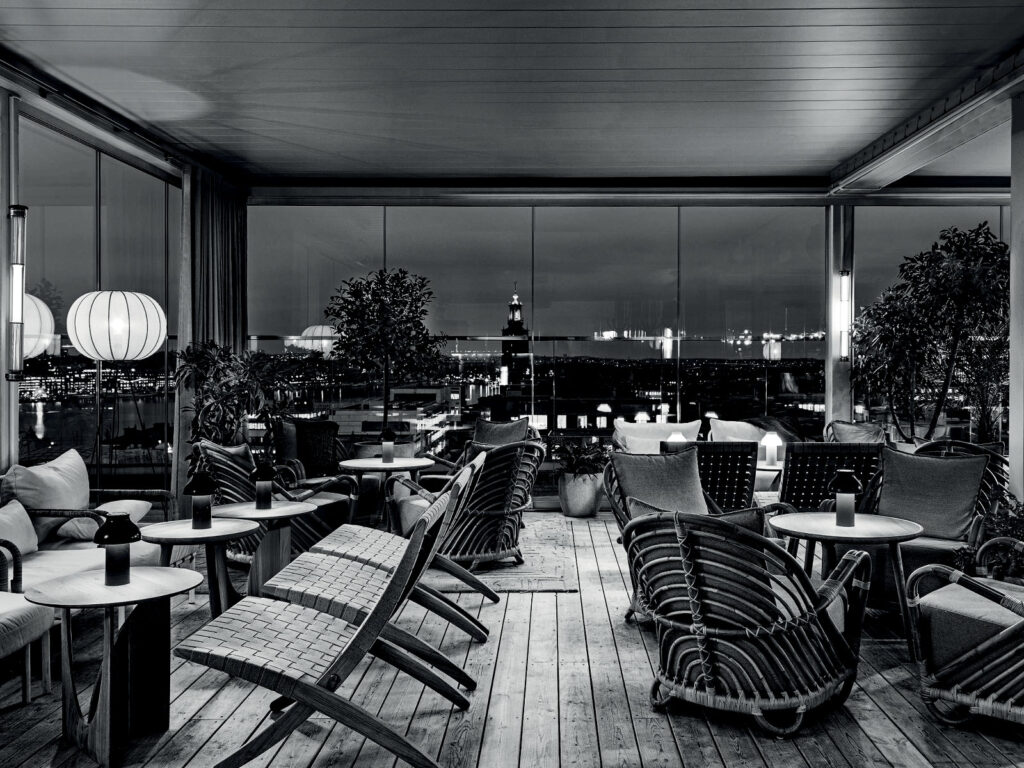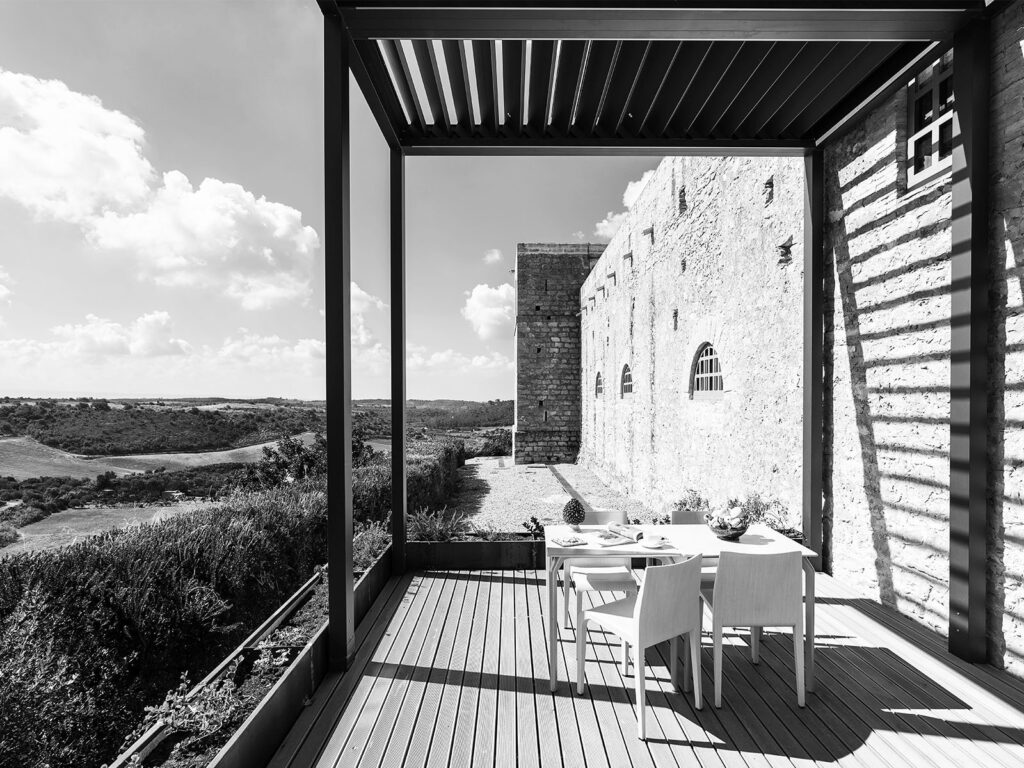Pergolas and awnings have become part of our daily lives, defining the open-air spaces of shops, restaurants, hotels and private homes. But what is the origin of this natural “reliability” of outdoor structures? Pratic has decided to find out with the help of neuroscience, revealing how its collections are far more than they may at first seem.
An increase can be achieved in commercial floorspace or the spaces in a home, but also in the well-being of the people using these environments. The success of outdoor structures is not limited to functional and business opportunities but above all is tied to the intrinsic features of pergolas that have a positive impact on our mental and physical balance.
Right and left hemisphere: Our brain sets the rules for design
Our brain has a right and a left side: two hemispheres that are similar yet distinct, each designed for functions that are very different from one another. Our entire perception of the world derives from this asymmetric structure of the human brain, determined by the combination of two hemispheres, which require a complex balance.
Just think that already 1.4 million years ago, evolutionary processes and the fight to survive had led to significant development of the left hemisphere, which can be seen in the strong prevalence of right-handed hominids, at 77%, a percentage that remains basically unchanged to this day. The consequences of this development are also evident in the world around us, where objects, communication and architectural elements are naturally designed to be used by people who mainly use their right hand, which we must remember is governed by the left hemisphere (and vice versa).
Focal and Panoramic attention
But what does this mean for our brain? Well, it has been noted that the left hemisphere is in charge of logical, analytical and linguistic functions, guided by focal attention. These elements therefore prevail over perceptions of the right hemisphere that controls synthesis, imagination and emotional functions through panoramic attention.
In the world of architecture and design, this dominance of attention to detail and analytical reasoning inevitably translated into the creation of objects and buildings designed primarily to be useful, practical and functional. This is where neuroscience can support architecture, through development of new design parameters capable of restoring a balance between the two hemispheres for spaces that promote well-being. However, one structure in particular seems to naturally combine the requirements of both right and left hemispheres, aesthetics and a sense of protection, a form of architecture that is already perfectly balanced: the pergola.

The human brain loves the pergola. It always has
Only outdoor architecture, such as the pergola, is capable of combining appreciation of aesthetic beauty with a desire to enter a space because it is perceived as reassuring.
This has been observed in numerous neuroscience studies that have identified pergolas as the perfect combination of open structure and protection, geometry of the spaces and the possibility to move freely within the environment: basic elements that our brain needs to achieve a state of calm and well-being.
Beauty and a desire to approach a space are not perceived as similar sensations by our brain. Instead, it is often the case that what appears beautiful to use does not generate the sense of security required to draw us into an environment.
This is because the right hemisphere processes panoramic visual and spatial mechanisms, regarding geometric modularity and spatial orientation. This means that if a space is open and allows us to see further into the distance, it is very pleasing to us. We feel secure in such an environment and we can see the surrounding landscape without being observed. The left hemisphere, on the other hand, processes focal visual and motor mechanisms, regarding the perception of space with its different reference points and motor comfort. In this case, a space appears beautiful and safe if it offers us the possibility to quickly approach or distance ourselves from it.
From this perspective, the structure of the pergola represents the ideal solution. Glazed panelling around the sides and a covering with mobile roof give the option of complete protection, but also allow the user to see into the distance, hide away, identify threats and decide whether to approach or retreat. These are requirements dictated by evolutionary and survival processes that today translate into a natural sensation of well-being when we spend time in these evocative outdoor spaces.

A window on nature to live better
International studies have demonstrated that contact with nature, also indirect, helps to reduce stress and mental fatigue. This has been demonstrated in hospitalised patients who recover better and with less support from pain-relief drugs if they are in a room facing a green area.
This evidence demonstrates the phenomenon of biophilia, i.e. the innate desire of humans to connect with nature. This connection is stimulated primarily through visual perception, which provides around 83% of the information originating from Pergola bioclimatica Opera our surrounding habitat.

Neuro-Architecture: four essential requirements for impeccable design
- Low environments are those generating the strongest sense to avoid them (not wanting).
- Closed spaces are considered the least pleasant (not liking);
- Opening of an environment is a feature that more often prompts a pleasant reaction (liking) and the desire to approach (wanting);
- The height of an environment can generate a positive sensation (liking) and the desire to approach (wanting).
The rebellion of the right hemisphere
Baroque, Liberty and Art Nouveau all represent attempts of the right hemisphere of the brain to fight back against the architectural pragmatism defined by dominance of the left hemisphere. These movements prioritised emotion, organic promiscuity of form, curves and the use of lines from the natural world. Nevertheless, these were no more than temporary reactionary movements, quickly reabsorbed by new rational forces, such as the industrial revolution and concepts of serial production and minimalism.